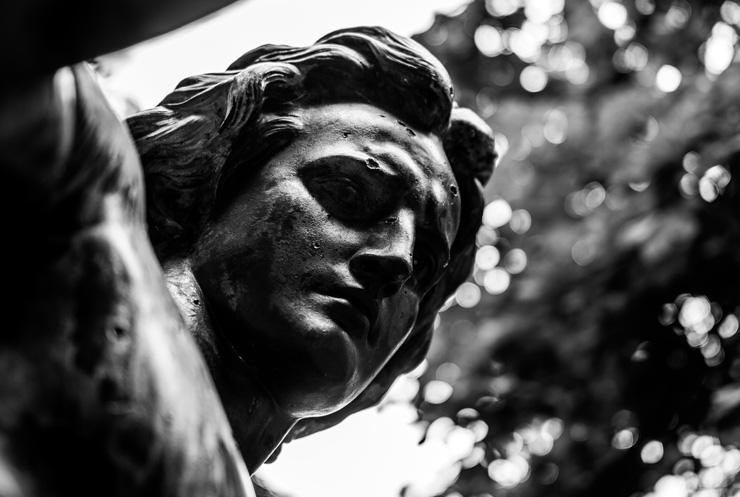
Whether or not you appreciate the meaning or message of an art piece, it is vital for a thriving society to respect and protect, not destroy, our artistic heritage
—
The assailant’s aim was clear: To wipe out the old man’s existence like a besieging army sacking a city. Front to back, back to front, the old man tottered as he clung to the cool, smooth platform while his attackers tugged and thrashed at his sturdy, time-worn body. No match for the group’s fury or their unrelenting force, he maintained his dignity even as he succumbed to their hatred and came crashing facedown to the ground.
The fallen figure in question was a bronze statue of Christopher Columbus.
Minnesota’s Columbus statue was originally conceived as a way to counter the discrimination against Italian Americans, who were considered outsiders by the state’s earlier, predominantly Northern European settlers. Ironically, the statue was trashed at the hands of American Indian activists attempting to assert their own voice and value into the chaos and civil unrest following the tragic death of George Floyd in Minneapolis.
“It has no value—it’s government property,” a young student said when I asked her how she felt about the statue’s destruction.
These words would have devastated Carlo Brioschi, the famous Italian-American sculptor who trained at the Academy of Fine Arts in Milan before creating the Columbus sculpture. Brioschi’s artistry touched several icons of American culture and community, including Grand Central Station and the majestic Classic Revival Northrop Auditorium at the University of Minnesota.
Art, in its broadest sense, is a form of communication.
Although the definition continues to be a source of debate, one thing is clear: Art is an act of expressing feelings, thoughts, and observations at a specific point in time.
Humans are the only species that create art. Borne of an artist’s head and heart and influenced by the times in which they live, creating art is a challenging and esteemed task that is both primal and personal.
There are thousands — hundreds of thousands — of works of art in in our nation’s museums, parks, public and private buildings, and educational institutions. Many of these are offensive to someone somewhere. And that is okay because art is not necessarily meant to please, although it often does.
According to Simon Schama, English historian and Columbia University professor:
“The power of the greatest art is the power to shake us into revelation and rip us from our default mode of seeing. After an encounter with that force, we don’t look at a face, a color, a sky, a body, in quite the same way again. We get fitted with new sight: in-sight. Visions of beauty or a rush of intense pleasure are part of that process, but so too may be shock, pain, desire, pity, even revulsion. That kind of art seems to have rewired our senses. We apprehend the world differently.”
I appreciate art because I’m an artist. But I can also be repulsed by art because I am a woman and, like all women, face an onslaught of art, artifacts, and images that objectify and marginalize us and our bodies every day.
There are far too many offensive artifacts for me to destroy in fashion, media, fine art, etc. And even if I were to destroy them, would America’s systemic sexism go away? If I choose to ignore them, does the reality of our sexist history and my pain associated with it go away?
Absolutely not.
Destroying art does not destroy history or events or people, or the painful emotions associated with them. Instead, destroying art destroys the physical manifestation of the artist’s creative gifts. It also destroys our respect for a fellow human being’s work and the message they felt compelled to share by fervently and painstakingly creating some-thing from no-thing.
Is the eradication of art that reminds us of humanity’s dark side — art that makes us feel inferior, objectified, or marginalized — truly the direction we want to go in America?
I hope not.
Frankly, I want to keep the upsetting art around so I can be reminded frequently of our past, painful as it may be.
I want to be reminded that we are capable of engaging in evil, that our history is riddled with reminders of this reality. “Evil is knowing better but doing worse,” according to Irving Sarnoff, psychology educator, author, and Fulbright scholar. Evil seems to be something we’re participating in more and more every day in our nation’s current cultural climate.
The purpose of history is to learn from it.
Art gives us the opportunity to do so by reminding us of who we are — human beings who are both incredibly good and incredibly bad. When we revisit the harm we’ve done in our past, we can make new, better choices today.
I can choose to make it my lifetime goal to fight for women’s equality, for example, or I can choose to tutor young girls so that I directly influence their confidence and capabilities. Or I can choose to destroy the art that another human being created because the message conveyed offended me — a day later, a decade later, a hundred or a thousand years later.
The purpose of history is to learn from it. And art is one of our best teachers.
We have an opportunity to learn from it…but not if we destroy it.
You may also enjoy reading Ammunition 4 Good: An Artist’s Creative Stand to End Gun Violence, by Gina Raphaela